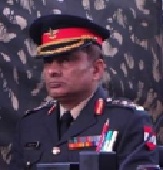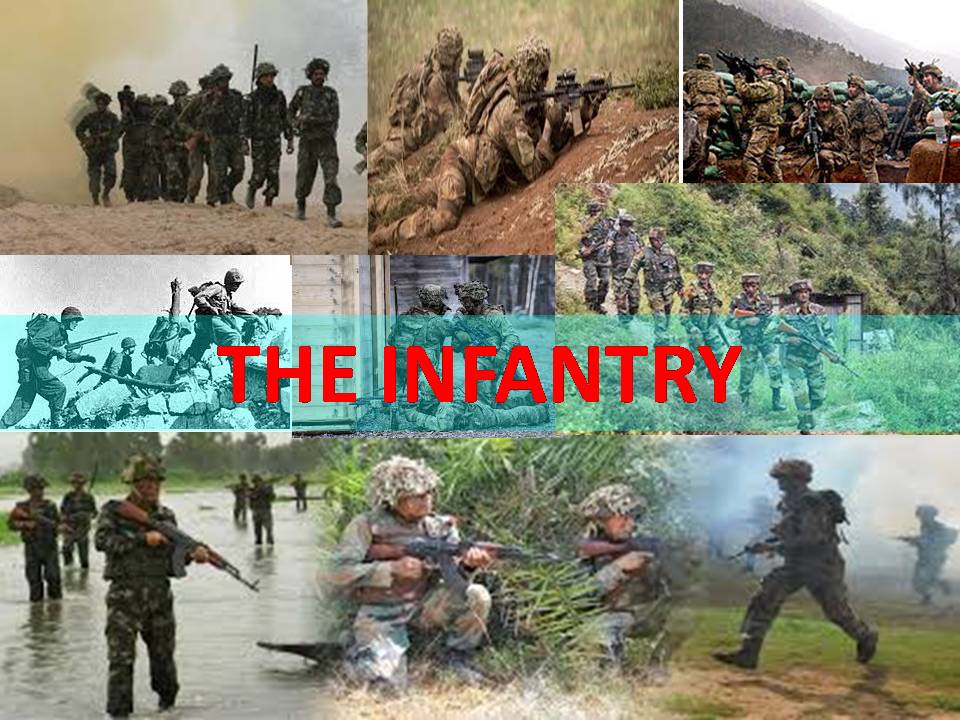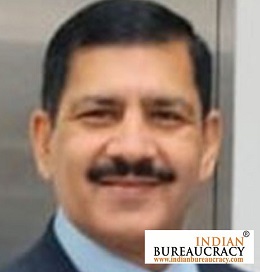“Only the Infantry and Armour can gain ground. Only the Infantry can hold it alone.” “Infantry is the Queen of the battle.”
Background : Infantry is a military specialization that engages in military combat on foot, distinguished from cavalry, artillery, and tank forces. Also known as foot soldiers, infantry traditionally relies on moving by foot between combats as well, but may also use armoured mounts, military vehicles, or other transport. Infantry make up a large portion of all armed forces in most nations, and typically bear the largest brunt in warfare, as measured by casualties, deprivation, or physical and psychological stress.
The Indian Army has a total of over 130 Infantry battalions of 32 infantry Regiments (Refer Appendix A). It needs to be understood that each regiment has more than one battalion. E.g 9 Madras means 9th Battalion of the Madras Regiment. The digit refers to a particular battalion(which is called a unit) and the name is of the Regiment. The names are legendary from the British Era. The composition of the units in British Era was based on area/ caste, however, in present day the units have mixed composition having Officers as well as jawans from PAN India. Officers in the units are not based on caste / state.
Tasks Of Infantry: Infantry is broadly tasked to defend an area or attack an area. These can be in any type of terrain or operation and in conjunction with armoured or independently. Besides the two broad categories they also have to undergo the following tasks(integral to defence / attack):-
- Prepare and camouflage defences / defensive structures such as bunkers, fortifications
- Erect obstacles such as barbed wire fencing, minefields
- Protection of roads / specified High priority installations from terrorist attacks
- Road clearance as part of anti terrorist operations
- Cordon and search of specified premises / area as part of anti terrorist operations
- Sniper duties
- Patrolling an area
- Reconnaissance and surveillance of an area
- Record fresh topographical information
- Assist in directing artillery / aerial fire on enemy
Organisation of Infantry Unit: An Infantry battalion has a manpower of about 25 Officers and about 800 jawans. Each battalion has four rifle companies(5 Officers and 135 jawans), an administration company and a support company. Each company has three platoons of 35 jawans each. Each platoon has three sections of 10 jawans each. The rifle companies have personal weapons like rifles, carbines and short range mortars with them.
Organisation Of Infantry Battalion: The Administration company is responsible for holding and maintaining the vehicles of the unit, rations, clothing, ammunition and complete logistical support to the unit. The Support company holds the support weapons such as medium range mortars, Medium Machine Guns(MMG), Heavy Machine Guns(HMG), Battle field Surveillance radars(BFSR), Anti tank weapons (Recoil less Guns(RCL)/ Rocket Launchers(RL)), communication equipment for supporting the battalion operations.
Infantry Weapons Infantry weapons are divided into two broad categories – Personal weapons and area weapons. Personal weapons are Rifles, carbines and pistols which are carried and used by personnel for personal protection and used against pin point targets such as an enemy personnel. Area weapons are those which are used over and area and in support of operations. These are LMG, MMG, HMG, mortars, RLs and are also called support weapons. .(Refer to Appendix B)
- Personal Weapons The requirement of a personal weapon is accuracy, stability, reliability, light weight, minimum effective range of about 400 metres. The weapon, if possible should be able to fire a burst of 2-3 rounds.
- Area Weapons The requirement of area weapon is stability, reliability, light weight, minimum effective range of about 600 metres. While the LMG, MMG and MMG must be able to fire long bursts, yet the stability should not be adversely affected. However, weapons like , RL and RCL should be capable of firing a variety of ammunition at different ranges to be effective against personnel, bunkers as well as limited damage to vehicles.
Conclusion: Some interesting details about Indian Army Infantry regiments are at Appendix A. These include the Motto and War Cries, which the reader would find interesting. Coining of each has its own story but these definitely give the soldiers a josh and uplifts their morale.
Appendix A
(Refers to para 2)
Infantry Regiments of Indian Army
| Regiment | Active From | Regimental Center | Motto | War Cry |
| The Brigade of the Guards | 1948 | Kamptee, Maharashtra | “Pahla hamesha pahla” (“first always
first”) |
“Garud ka hun bol pyare” (“I am from the Garuds, say O my friend”) |
| Madras Regiment | 1758 | Wellington, Tamil Nadu | “Swadharme nidhanam shreyaha”
(“it is a glory to die doing one’s duty”) |
“Vetri vel, Veera vel” (“Brave and victorious Spear – allegory
to Lord Murugan’s weapon (spear) “) |
| Rajputana | 1775 | Delhi Cantonment | “Veer bhogya vasundhara” (“the brave shall inherit the earth”) | “Raja Ramachandra ki jai”
(“victory to King Ramachandra”) |
| Rajput Regiment | 1778 | Fatehgarh, Uttar Pradesh | “Sarvatra vijay” (“victory everywhere”) | “Bol Bajrang Bali Ki jai” (“say victory to Lord Hanuman”) |
| Dogra | 1877 | Faizabad, Uttar Pradesh | “Kartavyam anvatma” (“duty before death”) | “Jawala Mata ki jai” (“victory to Goddess Jawala”) |
| Sikh Regiment | 1846 | Ramgarh | “Nischay kar apni jeet karon” (“with determination, I will be triumphant”) | “Jo bole So Nihal, sat sri akal” (“he who cries ‘God is truth’ is ever happy”) “Wahe Guruji Da Khalsa, Wahe Guruji Di Fateh” (“The Khalsa of Waheguru is victorious”) |
| Jat Regiment | 1795 | Bareilly, Uttar Pradesh | “Sangathan va veerta” (“unity and valour”) | “Jat balwan, jai bhagwan”
(“the Jat is strong, victory to God”) |
| Parachute Regiment | 1945 | Bengaluru, Karnataka | “Shatrujeet” (“the conqueror”) | “Balidan Param Dharma” (“Sacrifice Before Duty”) |
| Punjab Regiment | 1761 | Ramgarh Cantonment, Jharkhand | “Sthal wa jal” (“by land and sea”) | “Jo bole So Nihal, sat sri akal” (“he who cries ‘God is truth’ is ever happy”); “Bol Jawala Ma ki jai” (“say victory to Goddess
Jawala”) |
| The | 1758 | Jabalpur, Madhya Pradesh | “Sarvada shaktishali
(“always strong”) |
“Sarvada shaktishali” (“always strong”) |
| Sikh Light Infantry | 1944 | Fatehgarh, Uttar Pradesh | “Deg teg fateh” (“prosperity in peace and victory in war”) | “Jo bole So Nihal, sat sri akal” (“he who cries ‘God is truth’ is ever happy”) |
| Maratha Light | 1768 | Belgaum, Karnataka | “Duty, honour, courage” | “Bola Shri Chhatrapati Shivaji Maharaj ki jai, Temlai Mata ki jai” (“say victory to Emperor
Shivaji, victory to Goddess Temlai”) |
| The Garhwal | 1887 | Lansdowne, Uttarakhand | “Yudhaya krit | “Badri Vishal Lal ki jai” |
| Regiment | Active From | Regimental Center | Motto | War Cry |
| Rifles | nischya” (“fight with determination”) | (“victory to the Great Lord
Badri Nath”) |
||
| Kumaon Regiment | 1813 | Ranikhet, Uttarakhand | “Parakramo vijayate”
(“valour triumphs”) |
“Kalika Mata ki jai” (“victory to Goddess Kali”); “Bajrang Bali ki jai” (“victory to Lord Hanuman”); “Dada Kishan ki jai” (“Victory to Dada
Kishan”) |
| Assam Regiment | 1941 | Shillong, Meghalaya | “Assam vikram” (“unique valour”) | “Rhino charge” |
| Bihar | 1941 | Danapur, Bihar | “Karam hi dharam”
(“work is worship”) |
“Jai Bajrang Bali” (“victory to
Lord Hanuman”) |
| Mahar Regiment | 1941 | Saugor, Madhya Pradesh | “Yash sidhi” (“success and attainment”) | “Bolo Hindustan ki jai” (“say victory to India”) |
| Jammu & | 1821 | Jabalpur, Madhya Pradesh | “Prashata ranvirta” (“valour in battle is praiseworthy”) | “Durga Mata ki jai” (“victory to Goddess Durga”) |
| Jammu and | 1947 | Avantipur, Jammu and Kashmir | “Balidanam vir lakshanam ”
(“sacrifice is a characteristic of the brave”) |
“Bharat Mata ki jai” (“victory to Mother India”) |
| Naga | 1970 | Ranikhet, Uttarakhand | “Jai Durga Naga” (“victory to
Durga Naga”) |
|
| 1 Gorkha | 1815 | Sabathu, Himachal Pradesh | “Kayar hunu bhanda marnu ramro”
(“better to die than live like a coward”) |
“Jai Ma Kali, ayo Gorkhali” (“hail Goddess Kali, here come the Gorkhas”) |
| 3 Gorkha | 1815 | Varanasi, Uttar Pradesh | “Kayar hunu bhanda marnu ramro”
(“better to die than live like a coward”) |
“Jai Ma Kali, ayo Gorkhali” (“hail Goddess Kali, here come the Gorkhas”) |
| 4 Gorkha | 1857 | Sabathu, Himachal Pradesh | “Kayar hunu bhanda marnu ramro (“better to die than live like a
coward”) |
“Jai Ma Kali, ayo Gorkhali” (“hail Goddess Kali, here come the Gorkhas”) |
| 5 Gorkha | 1858 | Shillong, Meghalaya | “Shaurya evam nistha” (“courage and determination”) | “Jai Ma Kali, ayo Gorkhali” (“hail Goddess Kali, here come the Gorkhas”) |
| 8 Gorkha | 1824 | Shillong, Meghalaya | “Kayar hunu bhanda marnu ramro (“better to die than live like a
coward”) |
“Jai Ma Kali, ayo Gorkhali” (“hail Goddess Kali, here come the Gorkhas”) |
| 9 Gorkha | 1817 | Varanasi, Uttar Pradesh | “Kayar hunu bhanda marnu ramrod”
(“better to die than live like a coward”) |
Jai Ma Kali, Ayo Gorkhali (“hail Goddess Kali, here come the Gorkhas”) |
| Regiment | Active From | Regimental Center | Motto | War Cry |
| 11 Gorkha | 19181922; from 1948 | Lucknow, Uttar Pradesh | “Yatraham
vijayastatra” (“Victory resides where I reside”) |
“Jai Ma Kali, Ayo Gorkhali (“hail Goddess Kali, here come the Gorkhas”) |
| Ladakh Scouts | 1963 | Ladakh, Jammu and Kashmir | “Ki ki so so Lhargyalo”
(“Victory to God”) |
|
| Arunachal Scouts | 2010 | Rayang, Arunachal Pradesh | ||
| Sikkim Scouts | 2013 |
|
Appendix B
(Refers to para 7)
INFANTRY WEAPONS
| Ser | Name and Type | Company | Effective Range | Remarks |
| RIFLES | ||||
| 1. | AS50 Sniper Rifle | Accuracy international, United Kingdom | 1.5 Km | • 5 rounds in 1.6 seconds
• Incendiary and Explosive ammunition |
| 2. | SA80A2 Assault
Rifle |
Royal Small Arms Factory,
United Kingdom Upgraded by Heckler and Koch |
400 metres | • 5.56 mm calibre
• Bull pup design |
| 3. | AK74 assault
Rifle |
Klashnikov, USSR | 500 metres | 5.45 mm calibre |
| 4. | M4 Carbine | Colt, USA | 500 metres | • 5.56 mm
• Replace M16 rifle |
| 5. | HK 416 Rifle | Heckler and Koch, Germany | 300 metres | 5.56 mm |
| 6. | FAMAS Assault
Rifle |
Manufacture d’Armes de
Saint-Étienne (MAS) – France |
300 metres | • 5.56 mm
• 1,100 rounds per minute |
| 7. | M16 Assault Rifle | ArmaLite-Inc, USA | 550 metres | |
| 8. | AK103 | Kalashnikov, USSR | 500 metres | 7.62 mm |
| 9. | ZH05 Assault
Rifle |
China | 500 metres | • Can be used as a
Grenade launcher also • 5.8 mm |
| 10. | Indian Small
Arms System (INSAS) |
India | 400 m | • 600-650 rounds per minute
• Can be used as a rifle or Light Machine Gun(LMG) |
| LIGHT MACHINE GUNS(LMGs) | ||||
| 1. | M249 Squad
Automatic Weapon |
FN Herstel, USA | 3600 metres | • 5.56 mm
• 800 rounds per minute • Magazine and belt fed |
| 2. | Negev NG 7 | Punj Lloyd and Israel Military Industries | 300-1000 metres | • 5.56 mm
• 800-1050 rounds per minute |
| 3. | S&T Motiv K12 | Daewoo Precision Industry, South Korea | 800 metres | • 650-950 rounds per minute
• 7.62 mm |
Explosives, Rockets, and Mortars[edit]
| Name | Type | Origin | Notes |
| Grenade 36mm | Hand | India | Fragmentation grenade which can be hand-thrown or rifle-launched from 1A SLR. |
| Multi
Mode Grenade Shivalik |
Hand grenade | India | Status: In service.Standard grenade of the Indian Army. This modular grenade is available in Hand mode offensive, hand mode defensive and rifle mode. Types can be interchanged by changing outer sleeve.[11][12] |
| GP–25 | Grenade launcher(40 mm) | Soviet Union | Attached to AKM and AK-103 assault rifles. |
| Multi
Grenade Launcher 40mm |
Grenade launcher(40 mm) | India | Status: In service.Semiautomatic six shot 40mm x 46mm low velocity grenade launcher. Manufactured at Ordnance Factory Tiruchirappalli. *[2] |
| AGS–17 Plamya | Automatic grenade
launcher (3 0mm) |
Soviet Union | Status: In service. Standard automatic grenade launcher, used as fire support weapon in infantry formations. |
| AGS–30 | Automatic grenade launcher (3 0mm) | Russia | Replacing the AGS-17 and being manufactured at Ordnance Factory Tiruchirappalli. |
| RCL Mk II | Recoilless rifle (84mm) | India | Carl Gustav Recoilless Rifle produced by OFB. |
| RCL Mk | Recoilless rifle (84mm) | India | Lighter, updated version of the RCL Mk II produced by OFB. |
| 106mm | Recoilless | United States | |
| B–300 Shipon | Rocket Launcher | Israel | For use by Special Forces. Specially Marcos and Para(SF). |
| RPO–A | Rocket Launcher | Russia | |
| C90–CR | Rocket Launcher | Spain | In use with the infantry units. C–90–CR–RB (M3) variant only. |
| OFB E1 51mm | Mortar | India | Used by assault sections of infantry formations. |
| OFB E1
81mm
|
Mortar | India | Used by mortar platoons of infantry formations. |
| L16 81mm mortar | |||
| OFB E1 120mm | Mortar | India |

About the Author : Col Manoj Mehrotra is an alumni of the National Defence Academy and has now retired after 33 years of service. He was commissioned in the Army Air Defence and has a rich experience in different designations as well as locations. He has also been Principal Consultant to Department of Urban Development, Govt. of MP for Smart City Projects.
He can be reached at [email protected] or via LinkedIn: linkedin.com/in/col-manoj-mehrotra-retd-20764422





